Qatar
Another stopover in the Middle East, this time in Qatar. The Gulf state is now a prestigious and influential country on the international stage. The 2022 FIFA World Cup brought worldwide attention, and the first Formula 1 race was held in the emirate a year earlier. The small country also has a powerful presence on the political stage: it has taken on the role of mediator in the war between Israel and Hamas. Together with the United Arab Emirates and Saudi Arabia, it is fighting for pole position in the region in order to lead the Middle East into the future, establish itself in international security and trade policy and amaze the world with huge events and mammoth projects. At the same time, it strikes a softer note than the UAE, is more dignified and less lavish. Doha is not a second Dubai, it is more like Abu Dhabi, which tries to impress with culture and class.
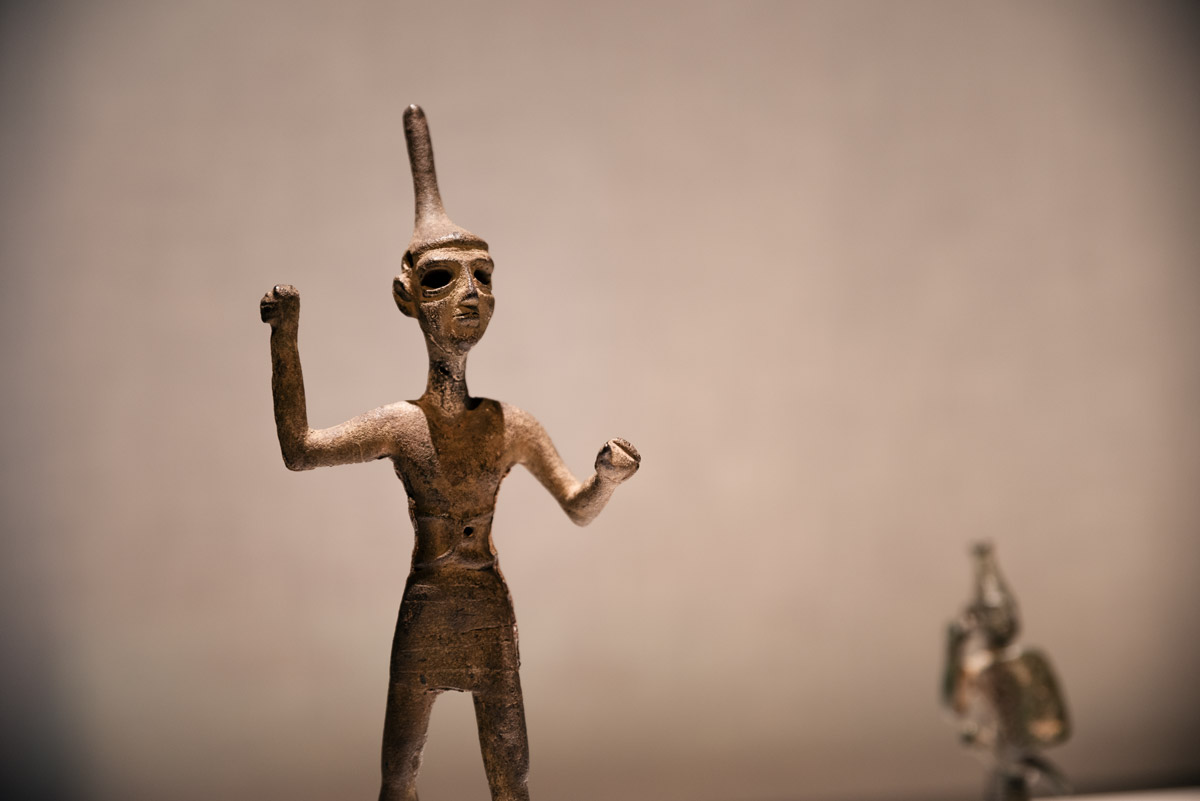
On a mild February morning, we stroll through Doha’s old town. The city’s residents usually meet here, in the old market district of Souq Waqif. Tourists – there aren’t many of them – sit in the cafés or haggle with the numerous traders. But now, before lunchtime, most of the stores are still closed. This makes the narrow side streets, which branch off from the main street to form an impenetrable labyrinth, all the more interesting.
We lose ourselves deeper and deeper in the old town. Suddenly the smell of animals and straw hangs in our noses. We are soon standing in the stables of a rich sheikh. Noble horses and camels, immaculate stalls, hard-working employees looking after the animals. Marveling and viewing is expressly encouraged. Just one alley away, falconry stores line the street. Magnificent falcons sit on perches in the cool shade, leather hoods on their heads so that they remain calm and doze in a kind of twilight state. In front of a nondescript building, a row of visibly nervous men wait. They have falcons on their arms or in transport boxes. This is the falcon hospital. This is where the expensive animals are examined and cured. Qatar’s upper classes spend a lot of money on this.

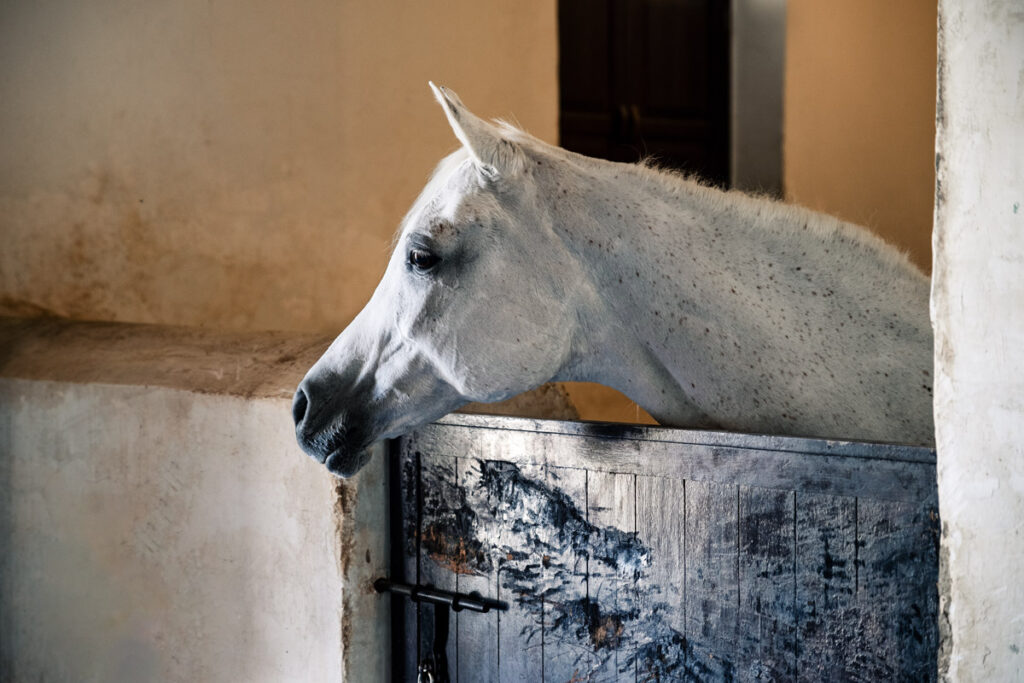
We watch the hustle and bustle over a coffee in one of the numerous roadside bars and enjoy the wonderfully warming rays of sunshine. We then stroll down to the promenade and follow the Corniche for a while, which turns out to be a beautifully designed pedestrian zone between the sea and the multi-lane highway. Always in view: the growing skyline of the financial district at the opposite end of the Gulf of Doha. Artificial islands rise out of the water. As day turns to dusk, the skyline blazes like a soft desert fire.
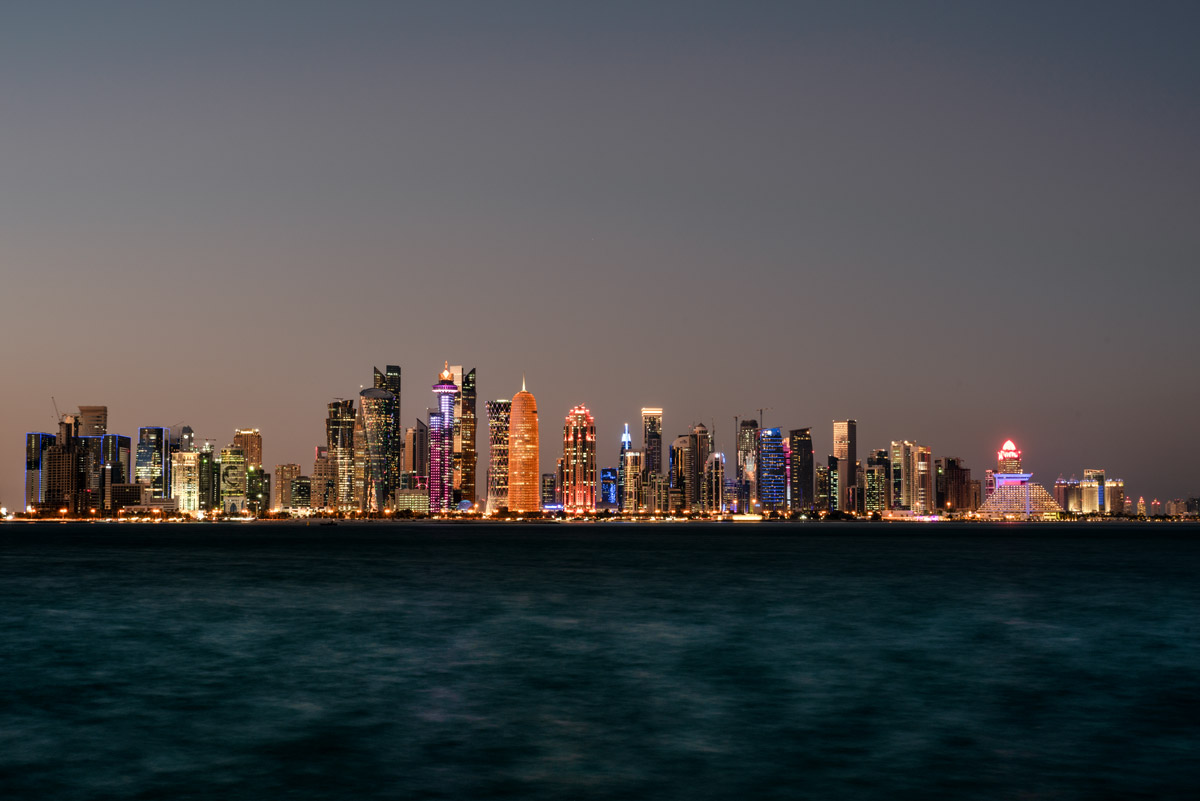
The next morning, after a hearty breakfast, we walk to the Museum of Islamic Art. For Chris, as a photographer, the museum itself is more interesting than the exhibits. The cube-shaped building casts shadows and shades. Clear lines form geometric shapes. Inside the building, paths and light strips lead through the airy space of the large entrance hall. A window front lets in daylight. This creates a wonderful flood of visual impressions of shapes, colors and patterns. While Chris lies in wait to find the perfect angle or waits for museum visitors to accidentally walk through his picture so that the composition is perfect, Vany studies the exhibits. Weapons and artifacts from the Arabian Peninsula, beautifully presented, invite you to marvel.
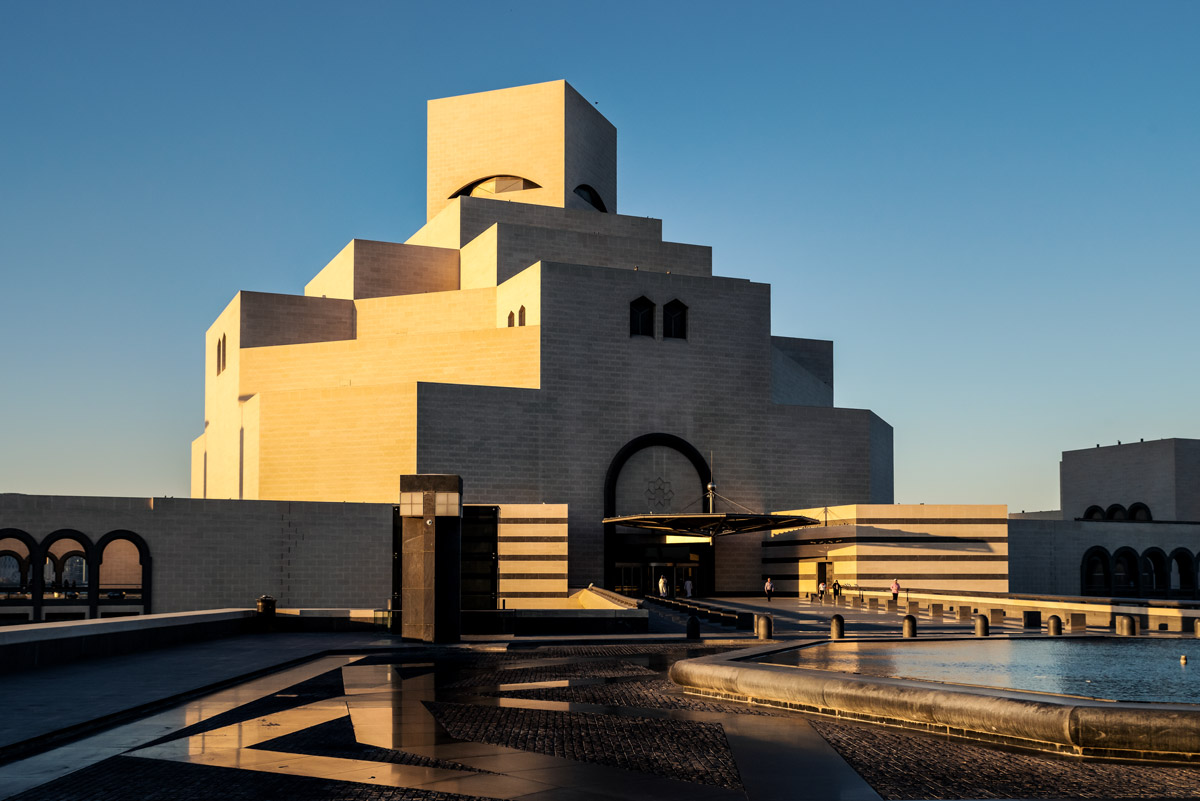
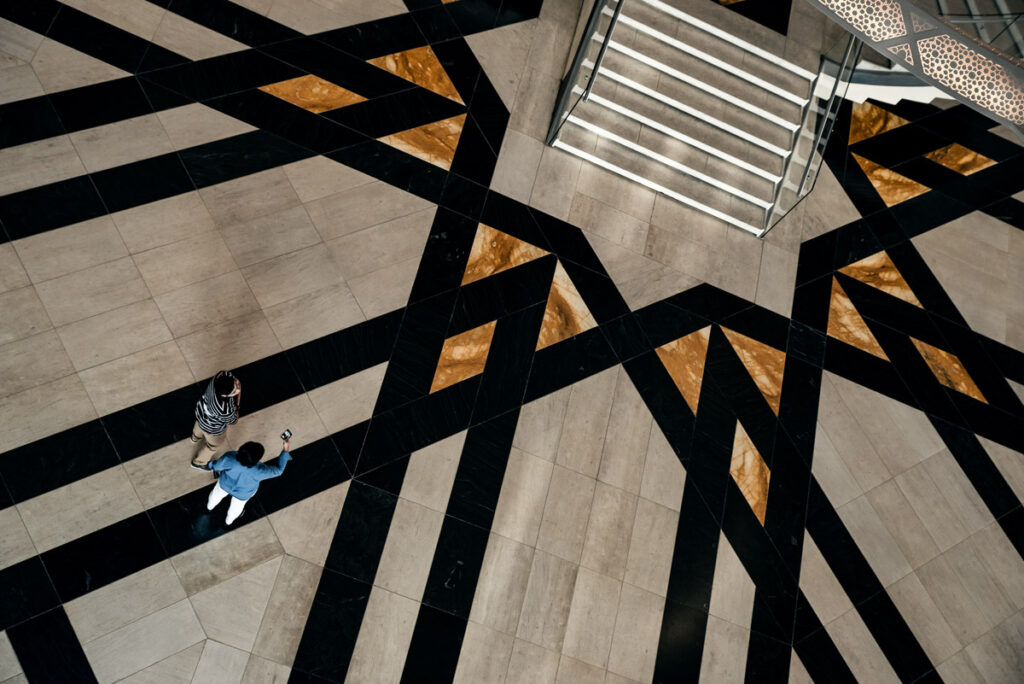
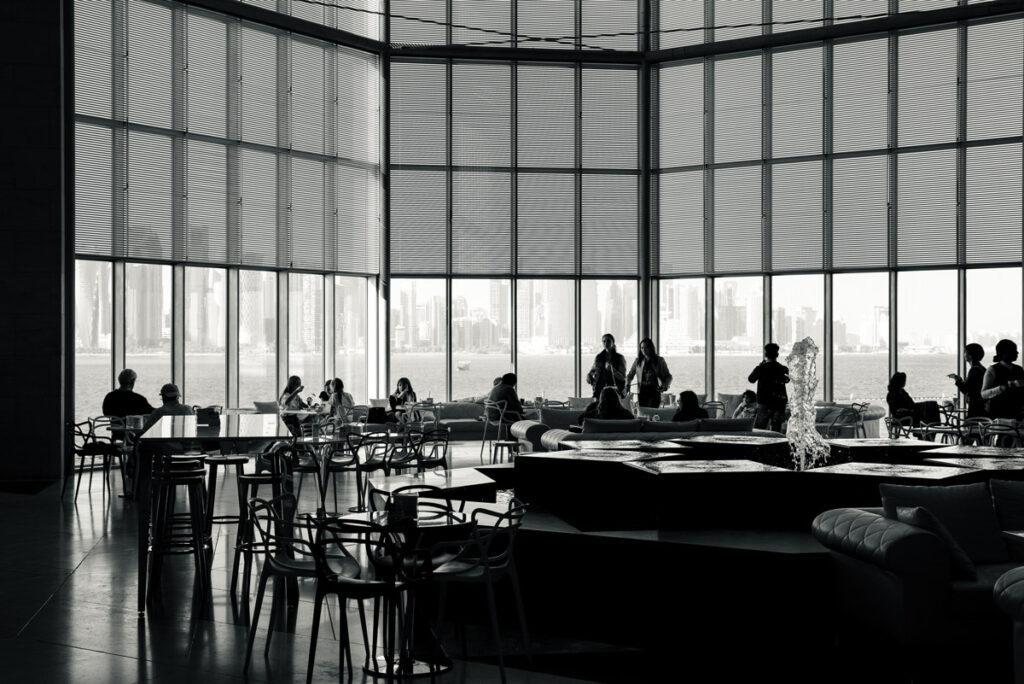
By the time we leave the museum, it is already afternoon. It’s time to return to the airport for our onward flight to Asia. Our stay in Qatar was short. There was so much we didn’t see: the financial district, the Qatari desert or more of the country in general. While we perceived Kuwait and Bahrain as very independent and authentic, we found the United Arab Emirates to be over the top and more show than tell. Qatar ranks in the middle for us and is therefore probably the perfect introduction to Arab culture, which knows how to enchant with incredible stories.
Info about our trip
Like all the other Gulf states, we visited Qatar during an extended stopover and spent two nights in Doha. At the time of our trip in 2019, Qatar had only just established a certain tourism sector. However, thanks to increased marketing, Formula 1 and the World Cup, visitor numbers to the small country have risen sharply. In terms of popularity as a vacation destination, Qatar is still overshadowed by the United Arab Emirates.
To really get to know the capital, you should plan two or even three nights. To gain an insight into the country, five to seven nights are recommended. For us – and probably many others – Qatar will only be a stopover on our onward journey. This was just right for us, as we can do little with the pomp and fairytale world of the Gulf States. For foodies, vloggers and shopping enthusiasts, however, Qatar may be a promising destination.
The price level in Qatar is roughly the same as in Germany. Some things are slightly cheaper (fuel prices), but others are more expensive (particular foods). If you assume a normal middle-class vacation, then calculate with German prices for hotel accommodation and restaurant visits.
Qatari cuisine has an Arabic influence. Meat is usually lamb, chicken or beef. It is served with bread and rice, and a variety of spices, garlic, eggplant, chickpeas and peppers enrich the dishes. Nuts, dates, figs and yogurt are served for dessert. The fact that Qatar attracts a large number of workers from all over the world is also reflected in its culinary diversity. Immigrants from South and Central Asia in particular have brought their cuisine with them and offer delicious alternatives to traditional Arabic food.
For the right amount of money, you can spend the night in Doha like the kings from the tales of 1001 Nights. There is no upper limit to luxury and cost. However, if you are traveling on a low budget, don’t expect to get a bargain for your money. For 50 to 70 euros you can usually get outdated, but not necessarily dirty, hotels in somewhat remote districts. For our two-day stay, that was perfectly fine.
Qatar is an absolutely safe country to travel to.
In general, Arab culture is very child-friendly. Children are pampered and carried on hands, and Doha is also a modern and mostly clean city. In 2019, however, we were still traveling without a child and therefore cannot judge whether there are, for example, public changing rooms or at least toilets, especially as things have certainly changed since then. However, we imagine that a trip to Qatar with children would be feasible, as the flight there is not too long.
Like all countries in the Middle East, Qatar and the capital Doha are designed for transportation by car. There are wide, multi-lane roads of very good quality. So if you want to see something of the country, a rental car is the best and also a cheap option. In Doha, we explored everything on foot, but only in the old town and the surrounding districts. Otherwise, cabs and the metro are a good option.
- Nicolas Fromm provides a critical portrait of the Gulf state of Qatar, in particular the background to the World Cup, in Katar: Sand, Geld und Spiele
- Perhaps the most up-to-date travel preparation is provided by Noah Gil-Smith with Katar: Das Wichtigste im Überblick
